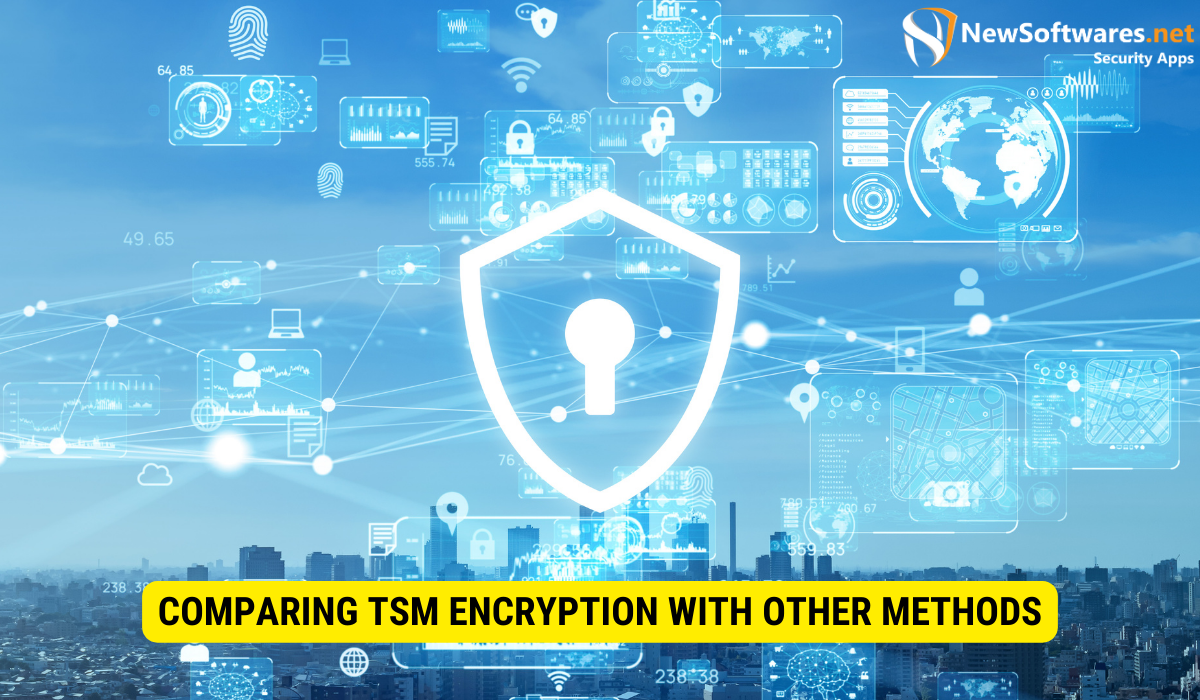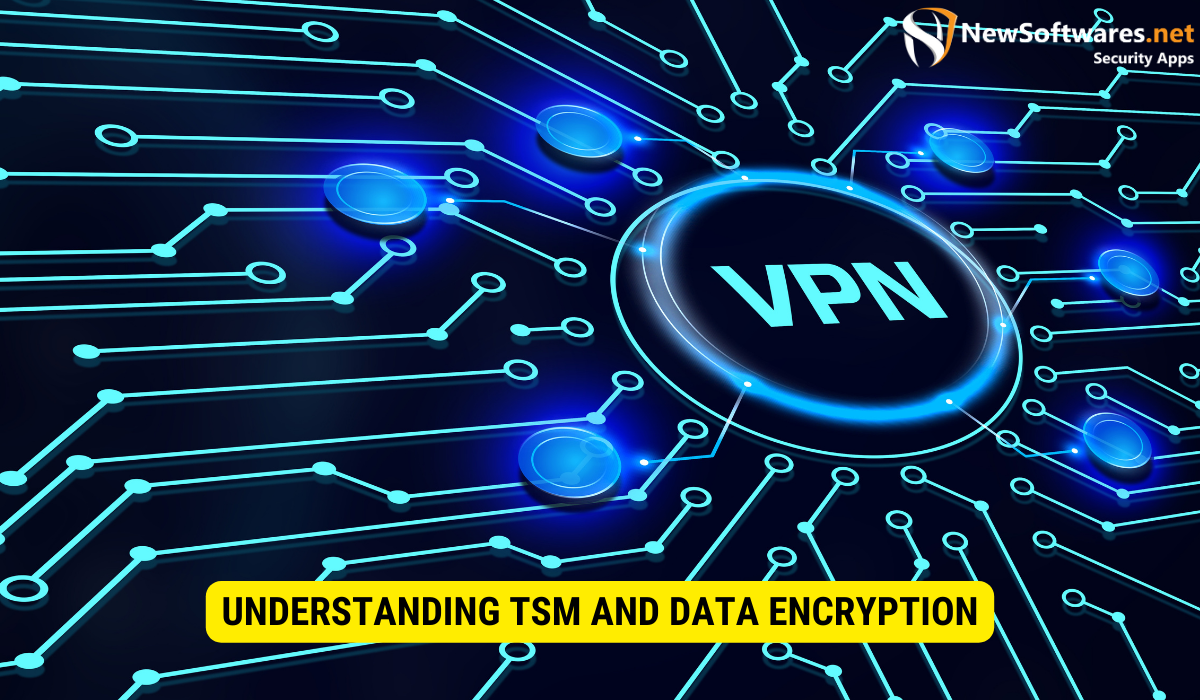Yes, Tivoli Storage Manager (TSM) encrypts data on the tape, enhancing data security during backup and restore operations.
In today’s digital age, data safety is of utmost importance. Organizations across various industries constantly seek ways to warrant the confidentiality and integrity of their sensitive information. One popular solution that is widely used is TSM, or Tivoli Storage Manager, which provides comprehensive data backup and recovery solutions. But does TSM encrypt data on the tape? Let’s explore this question and delve deeper into the world of TSM and data encryption.
Understanding TSM and Data Encryption
Before we dive into the encryption aspect, let’s first understand what TSM is and the basics of data encryption.
When it comes to protecting valuable information, Tivoli Storage Manager (TSM) is a software product developed by IBM that offers efficient and effective data backup, recovery, and archiving. It is designed to ensure the availability and accessibility of data in case of any unforeseen events such as system failures, data corruption, or natural disasters.
TSM employs a client-server architecture, where the TSM server manages and stores the backup data while the clients initiate and perform the backup and restore operations. This architecture allows for centralized control and management of data protection, making it easier for organizations to safeguard their critical information.
With its robust features and enterprise-level capabilities, TSM has become a go-to solution for many organizations across various industries. It offers reliable data protection, scalability, and flexibility to meet the ever-growing data storage and management demands.
What is TSM?
Tivoli Storage Manager, or TSM, is a comprehensive solution that goes beyond traditional backup and recovery methods. It provides a unified approach to data protection, allowing organizations to manage their data efficiently across different platforms and environments.
One of the critical features of TSM is its ability to perform incremental backups, which means that only the changes made since the last backup are stored. This approach reduces the amount of data transferred and stored, resulting in faster backup and restore operations and optimized storage utilization.
Moreover, TSM offers advanced features such as data deduplication, eliminating redundant data, and reducing storage requirements. This saves valuable storage space and improves backup and restore performance.
The Basics of Data Encryption

Data encryption plays a vital role in confirming the security of sensitive information. Encryption is changing plain text data into an illegible format, known as ciphertext, by applying an encryption algorithm and using a secret key.
There are two main types of encoding: symmetric encryption and asymmetric encoding. Symmetric encryption uses the same key for encryption and decryption, while asymmetric encryption uses a duo of keys – a public key for encryption and a private key for decryption.
Data encryption provides an additional shield layer by making it extremely hard for unauthorized individuals to access and comprehend the information, even if they gain physical or logical access to the storage media or files.
When it comes to data encryption in the context of TSM, the software offers built-in encryption capabilities that allow organizations to encrypt their backup data at the source before it is transmitted to the TSM server. This ensures that the information remains encrypted throughout the entire backup process, including storage and transmission.
TSM supports various encryption algorithms, including Advanced Encryption Standard (AES), which is widely recognized as a secure and efficient encryption algorithm. Organizations can choose the encryption algorithm and key length best suits their security requirements.
In addition to encrypting backup data, TSM also provides features for managing encryption keys. These features include key rotation, key escrow, and key recovery, ensuring that organizations have full control over their encryption keys and can securely manage them throughout their lifecycle.
By combining the power of TSM’s data protection capabilities with robust encryption, organizations can effectively safeguard their sensitive information and mitigate the risks associated with data breaches and unauthorized access.
The Process of TSM Data Encryption
Now, let’s explore how TSM handles data and the role of encryption within the TSM environment.
How TSM Handles Data?
When a backup operation is performed with TSM, the client-side software encrypts the data before transmitting it to the server. TSM uses various encryption algorithms, such as the Advanced Encryption Standard (AES), to ensure the confidentiality of the data during transit and storage.
The encryption process occurs on the client side rather than on the TSM server itself. This approach reduces the computational overhead on the server and allows for faster backups, as the encryption and decoding operations are performed on the client’s hardware.
The Role of Encryption in TSM
Encryption plays a crucial role in TSM’s data protection strategy. By encrypting data during transmission and storage, TSM ensures that even if the physical tapes or storage media are lost or stolen, the information remains secure and inaccessible to unauthorized individuals.
TSM provides flexibility when it comes to encryption key management. Organizations can manage the encryption keys themselves or utilize external key management systems to enhance security and comply with industry regulations.
Benefits of Using TSM for Data Encryption
Now that we understand how TSM handles data encryption let’s explore its benefits to organizations.
Security Advantages of TSM Encryption
By using TSM for data encryption, organizations can significantly enhance the security of their sensitive information. Encryption defends data at rest and in transit, safeguarding it from unauthorized access, interception, or tampering.
TSM allows organizations to implement strong encryption algorithms, ensuring the highest level of security for their valuable data. This level of protection provides peace of mind, knowing that even if a data breach occurs, the encrypted data remains unreadable and unusable.
Efficiency and Performance of TSM Encryption
Despite the additional overhead of encrypting and decrypting data, TSM manages to strike a balance between security and efficiency. The client-side encryption process minimizes the impact on backup and restore operations, allowing organizations to maintain acceptable performance levels.
Furthermore, TSM’s encryption methods are highly optimized to leverage the processing power of modern hardware, ensuring that the encryption and decryption operations are performed swiftly and seamlessly.
Potential Drawbacks of TSM Data Encryption
Although TSM offers numerous advantages in terms of data encryption, there are some potential drawbacks that organizations should consider.
Challenges in Implementing TSM Encryption
Implementing TSM data encryption requires careful planning and coordination. Organizations must consider factors such as key management, encryption algorithm selection, and the potential impact on backup and restore processes.
Ensuring that the encryption implementation aligns with the organization’s security policies and regulatory requirements is crucial. Adequate training and awareness programs should be in place to educate users about the importance of encryption and how to properly manage encryption keys.
Limitations of TSM Data Encryption
While TSM provides robust data encryption capabilities, it is essential to know its limitations. TSM encryption primarily focuses on protecting data at rest and during transit but does not provide end-to-end encryption. Other layers of security, such as secure communication channels or application-level encryption, may be necessary to achieve complete data protection.
Organizations should also be aware that encrypting large volumes of data can consume additional storage space and increase the time required for backup and restore operations. Considering these factors and balancing security requirements and operational efficiency is crucial.
Comparing TSM Encryption with Other Methods

When choosing an encryption method, organizations often evaluate various options to determine the best fit for their needs. Let’s compare TSM encryption with other encryption tools to better understand its strengths and limitations.
TSM vs. Other Encryption Tools
One major advantage of TSM encryption is its integration with the TSM backup and recovery ecosystem. By utilizing TSM for data encryption, organizations can benefit from a unified management platform, simplified administration, and centralized reporting and auditing.
However, organizations may opt for third-party encryption tools if they require specific features or if they operate in a heterogeneous environment where multiple backup solutions are in use. Dedicating resources to evaluating various encryption tools can help organizations make well-informed decisions based on their unique requirements.
Factors to Consider in Choosing an Encryption Method
Choosing the right encryption method is a critical decision that organizations must make based on several factors. These factors include the level of security required, compliance with industry regulations, ease of implementation and management, scalability, and interoperability with existing systems.
Organizations should conduct a comprehensive risk analysis and engage with stakeholders to assess their specific needs and potential threats. Exploring different encryption methods and consulting with cybersecurity experts will help you select the most suitable solution.

